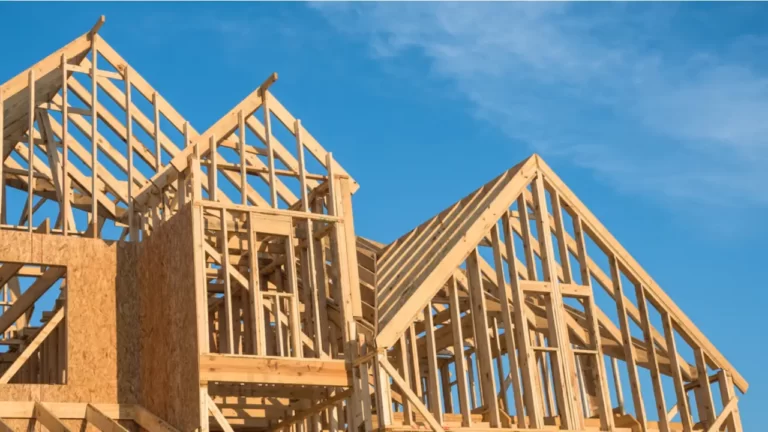“Unlocking Your Equity: A Guide to Reverse Mortgage Refinancing”
Are you a homeowner looking to tap into your home equity without having to make monthly mortgage payments? A reverse mortgage refinance could be the solution for you. In this guide, we’ll explore the ins and outs of reverse mortgage refinancing, eligibility requirements, and the process involved.
If you’re a senior homeowner who has accumulated significant home equity, you may be able to unlock that equity through a reverse mortgage refinance. Reverse mortgage refinancing allows you to convert a portion of your home’s equity into cash, while still retaining ownership of your home. In this guide, we’ll walk you through the process of reverse mortgage refinancing, eligibility requirements, and how to determine if it’s the right choice for you.
One of the key benefits of a reverse mortgage refinance is that it can provide a steady stream of income during retirement. Many seniors find that they need additional funds to cover living expenses, healthcare costs, or unexpected expenses. A reverse mortgage refinance can provide a way to access that cash without selling your home or taking on new debt.
What is a Reverse Mortgage Refinance?
A reverse mortgage refinance is a type of loan that allows homeowners who are 62 years or older to borrow against the equity in their home. Unlike traditional mortgages, reverse mortgages do not require monthly payments. Instead, the loan is repaid when the borrower moves out of the home, sells the property, or passes away.
How Does Reverse Mortgage Refinancing Work?
When a borrower applies for a reverse mortgage refinance, they are essentially taking out a new loan on their home. The new loan will pay off the existing mortgage, and any remaining funds will be paid to the borrower. The borrower can choose to receive the funds in a lump sum, line of credit, or monthly payments.
Eligibility Requirements
To be eligible for a reverse mortgage refinance, you must meet several requirements. First, you must be 62 years of age or older and own your home outright or have a significant amount of equity. Second, you must live in the home as your primary residence. Third, you must be able to demonstrate that you can pay property taxes, insurance, and other property-related expenses. Finally, you must complete a counseling session with a HUD-approved counselor to ensure that you understand the terms of the loan.
Loan-to-Value Ratio (LTV) for Reverse Mortgage Refinancing
The loan-to-value ratio (LTV) is an important factor when it comes to reverse mortgage refinancing. The amount of equity in the home will determine how much the borrower can borrow. Generally, borrowers can borrow up to 60% of their home’s appraised value.
Home Equity and Reverse Mortgage Refinancing
One of the biggest advantages of reverse mortgage refinancing is the ability to tap into home equity without having to make monthly payments. Homeowners can use the funds for a variety of purposes, such as paying off debt, covering medical expenses, or making home improvements.
Refinance Process for Reverse Mortgages
The process for reverse mortgage refinancing is similar to that of a traditional mortgage. The borrower will need to complete an application and provide documentation, such as proof of income and homeowners insurance. The lender will then conduct an appraisal of the property to determine its value. If the borrower meets the eligibility requirements and the property appraises for the desired amount, the loan can be approved and closed.
Closing Costs
Like with any mortgage, a reverse mortgage refinance comes with closing costs. These costs can include appraisal fees, origination fees, and other fees associated with the loan. It’s important to understand these costs upfront and factor them into your decision-making process. Some lenders offer no-closing-cost options, but these may come with higher interest rates or other fees.
Home Equity and Estate Planning
One of the most significant considerations for seniors considering a reverse mortgage refinance is the impact on their estate planning. When you take out a reverse mortgage refinance, you are essentially borrowing against the equity in your home. This means that there will be less equity available to your heirs when you pass away.
Things to Consider When Refinancing with a Reverse Mortgage
Before deciding to refinance with a reverse mortgage, there are a few things to consider. First, reverse mortgages tend to have higher closing costs than traditional mortgages. Additionally, the borrower will be required to pay mortgage insurance premiums (MIP) as a part of the loan.
Another consideration is that the loan balance will increase over time as interest accrues. This means that the borrower’s equity in the home will decrease over time, potentially leaving less for heirs to inherit.
Final Thoughts Reverse mortgage refinancing can be a great option for homeowners looking to tap into their home equity without having to make monthly payments. However, it’s important to carefully consider the eligibility requirements, loan-to-value ratio, and other factors before making a decision. By doing your research and working with a reputable lender, you can unlock the potential of your home equity with a reverse mortgage refinance.
(Review our Refinance Calculator to consider if a Refinance is the best option for you. Also, before the refinance process, remember to check your middle credit score at Middle Credit Score® to ensure your middle credit score, which is the approval credit score most lenders use, is the strongest it can be. Doing so allows consumers to avoid lenders’ guidelines which will often charge higher fees, points, and interest rates with a lower-than-average middle credit score. Plan ahead with MiddleCreditScore.com.)







